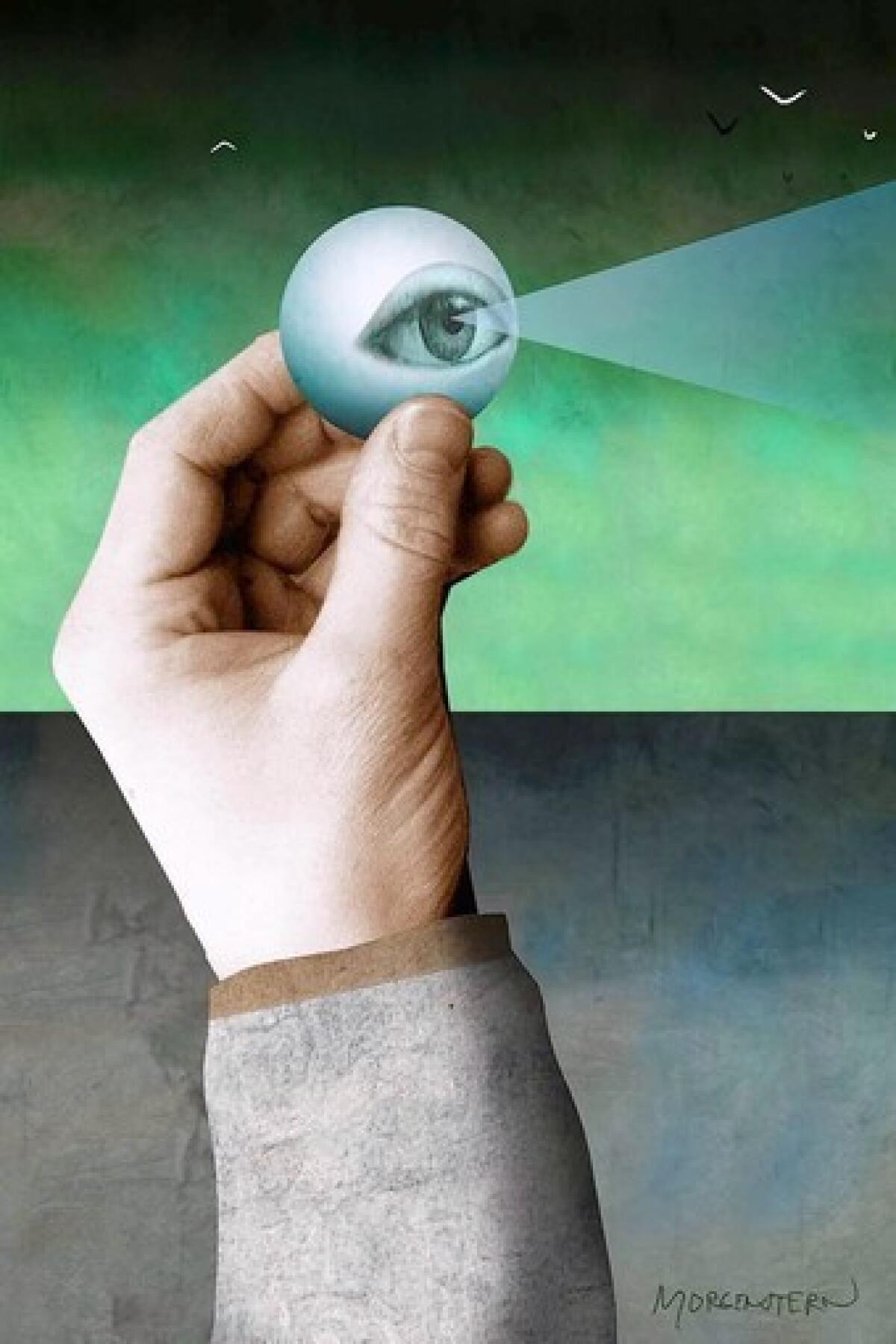Book review: ‘The Mind’s Eye’ by Oliver Sacks

- Share via
The Mind’s Eye
Oliver Sacks
Alfred A. Knopf: 270 pp., $26.95
Oliver Sacks has built a reputation on exploring the medical mysteries of individual patients to illuminate the larger mysteries of human experience.
“The Mind’s Eye,” a collection of essays on the ways in which we perceive the world (many of which have already appeared in some form, most notably in the New Yorker) is no different, introducing readers to a predictably unpredictable cast of characters: Lilian Kallir, a talented musician whose “musical alexia” (inability to read music) deepens into a devastating perceptual deficit; Patricia H., a gregarious art dealer whose stroke leaves her without language but still able to communicate; Howard Engel, a novelist who loses his ability to read but not his ability to write; Sue Barry, a neurobiologist whose sudden discovery of stereo vision radically alters the way she sees the world.
Their stories all revolve around visual perception and language, and the relationship between those two — subjective experience and how one describes that experience — provides the real enigma at the heart of this book.
There is a fine line between curiosity and spectacle, one upon which Sacks has flitted for years, but in “The Mind’s Eye” he may deflect some criticism by putting himself firmly in the spotlight. In the essay “Persistence of Vision,” the longest piece in the book — written in the diaristic style of Hungarian author Frigyes Karinthy’s 1939 classic, “A Journey Round My Skull” — Sacks offers us an intimate account of his recent experience with ocular melanoma.
“People turned into bizarre, elongated, El Greco-like figures, tilted to the left — they made me think of the insectlike Selenites pictured in my edition of H.G. Wells’ ‘The First Men in the Moon,’” Sacks writes. “Faces, in particular, would develop translucent, puffy, almost protoplasmic protuberances, like a Francis Bacon portrait.”
With the trained clinician’s eye for detail, Sacks documents his changing perceptual reality, and this experience becomes remarkably real for the reader.
Critic C.P. Snow famously advocated for a “third culture” bridging the gap between science and the humanities. With references to figures such as Borges and Poe blending with references to the medical aspect of each case, Sacks brings these two (perhaps not so different) worlds together, repeatedly reminding us that his world view is an associative web with nodes balanced in both. But these references are rarely trivial.
The other Francis Bacon, the Renaissance philosopher-scientist who championed experimental science, argued for the collection and organization of prodigious amounts of data, imagining a wealth of facts that could be assembled — like the abstract squares in a portrait by Chuck Close (who, like Sacks, is prosopagnosic, unable to recognize faces) — into a larger picture of scientific theory. Sacks argues for a type of data almost as controversial as Bacon’s experimental data was in his day: the conscious mind reporting back on itself.
For example, when he describes the findings on stereopsis (depth perception arising from binocular vision) that are held by “several eminent contemporary vision researchers,” Sacks then suggests that “such views, while wholly consistent with a behavioral or empirical theory of vision, give no weight to the qualitative and subjective aspects of stereoscopy. Here one needs inside narratives, personal accounts of what it is like to suddenly gain stereo vision after a lifetime of blindness … or to suddenly lose it after a lifetime of seeing in stereo (as I describe in the following chapter).”
The word “qualitative” here suggests qualia, a term used by philosophers and scientists to describe the overall feel of consciousness, such as the subjective experience of seeing, smelling, or tasting a green apple. (Qualia are at the root of what philosopher David Chalmers has called “the hard problem”: why should there be anything it is like to see the color green or taste a green apple? Machines can detect stimuli like color, but we’d never argue that they experience it. So why should humans have this extra level of experience; why should we have experience, at all?) That this interest in qualia should have any place in the practice of science is considered anathema to some; we can’t start dabbling in unmeasurable phenomena when we’re after objective truth, right? Well, says Sacks, if we don’t, then we’re missing a huge piece of the truth-puzzle. We may even get it wrong.
Again and again, Sacks invites readers to imagine their way into minds unlike their own, encouraging a radical form of empathy. When he admits to animal behaviorist Temple Grandin, who “thinks entirely in terms of literal images she has seen before,” that he “cannot summon visual images at will,” she is baffled: “How do you think, then?” [Here lies the fundamental tension between perception and language: How do you translate mental experience into words? Elsewhere, in the essay “Stereo Sue,” Sacks tries to explain stereo vision to the filmmaker Errol Morris, who has almost no vision in one eye and cannot perceive depth. “[O]ne cannot convey to the stereo-blind what stereopsis is like,” Sacks explains, “the subjective quality, the quale, of stereopsis is unique and no less remarkable than that of color.”
And yet, Sacks’ repeated insistence in this book on the inability of one person to imagine the perceptions of another seems to throw his project into question. If we cannot imagine our way into the minds of people radically different from ourselves, then what is the point of all these elaborate and gorgeously detailed case studies in “The Mind’s Eye”? What is the point of literature?
Despite the seeming impossibility of success, Sacks barrels onward and acknowledges the problem head-on late in the book: “There is a paradox here — a delicious one — that I cannot resolve: if there is indeed a fundamental difference between experience and description, between direct and mediated knowledge of the world, how is it that language can be so powerful?”
How, indeed. “The Mind’s Eye” expresses a stubborn hope that rests on language, “that most human invention,” which Sacks says “can enable what, in principle, should not be possible. It can allow all of us, even the congenitally blind, to see with another person’s eyes.”
Crist is reviews editor at the Believer and the author of the forthcoming book “Everything After.”
More to Read
The biggest entertainment stories
Get our big stories about Hollywood, film, television, music, arts, culture and more right in your inbox as soon as they publish.
You may occasionally receive promotional content from the Los Angeles Times.










